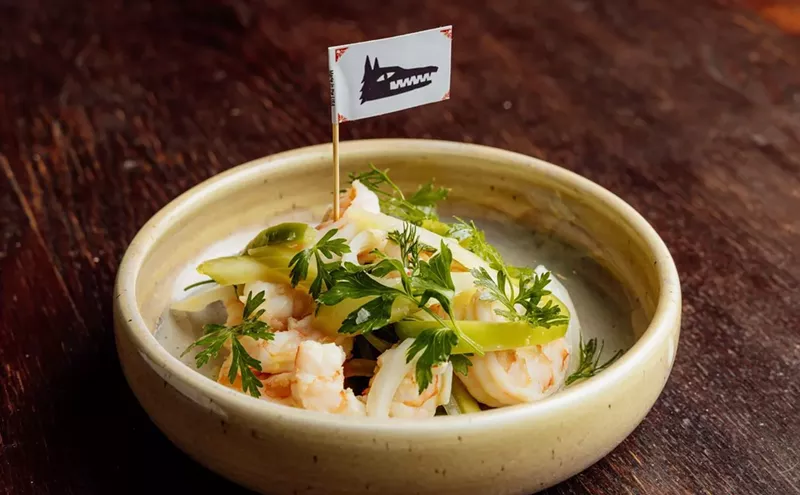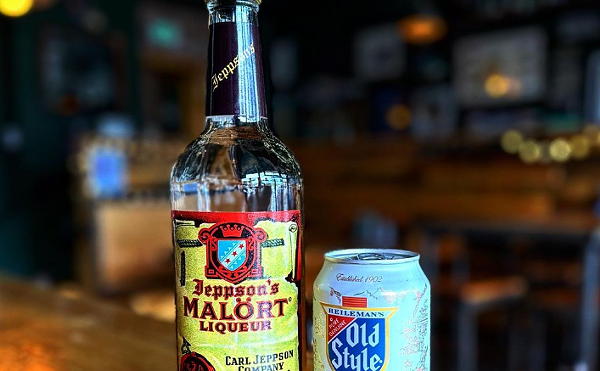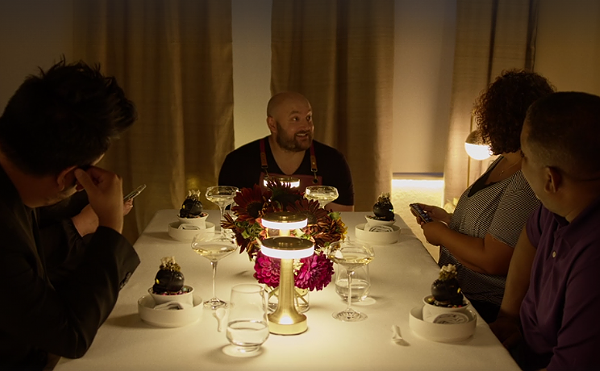Q: "Up," "neat," two fingers," "rocks," dry," "dirty" -- when are historical bar linguistics too much, when are they not enough? For example, I ask for two fingers of whiskey, which to me means a measure of two fingers in a tumbler. I'm served a shot in one of those half glass-bottomed shotglasses more aptly adorned with a TGI Friday's logo. I ask for a brand-name vodka "up, with a twist," and I've received it unchilled, in a tumbler. Can you give us a primer on generally accepted to more obscure ordering terms?
A: Great question. Bar terminology is often misunderstood by both inexperienced bartenders and patrons.
Let's start with the "Finger Method..." Ordering by the digit originated in American saloons in the Old West (1830s to 1920), where you would order whiskey by the width of the barman's finger. For example, if you asked for two fingers of whiskey, you would get straight, room-temperature spirit poured in an old fashioned glass (or tumbler) to the height of two fingers. This is an antiquated method and is no longer common because different bartenders have varied sizes of fingers, making the pour lack consistency. As well, most bars have a standard pour of 1.25 to 1.5 ounces, making it difficult to figure out how to charge for each finger.
Recently, with a nod to bar history, there has been an effort to standardize the "finger pour" to 3/4 of an inch per finger in an standard old fashioned glass, which equals about one ounce per finger. This would result in two fingers equaling two ounces and so on. This is not yet generally accepted, but as cocktail culture continues to evolve and more bartenders become well-versed in cocktail history, the standardized finger pour will become more recognized.
Here is a simple glossary of of commonly accepted bar terminology. (Note: liquid measures may vary at individual bars; the amounts listed are the ones I use as standard.)
Shot: 1.25 to1.5 ounces of spirit served up in a small glass.
Neat: 2 ounces of spirit at room temperature served in a standard old fashioned glass or tumbler.
Up: For straight spirit, 2 ounces stirred with ice to chill, generally served in a chilled cocktail glass. For a cocktail, shaken or stirred (depending on the ingredients) with ice, generally served in a chilled cocktail glass.
Rocks: For straight spirit, 2 ounces served over ice in a rocks or old fashioned glass. For a cocktail, shaken or stirred (depending on the ingredients) with ice, strained over fresh ice into a glass specific to the cocktail.
Double: 2.5 ounces of spirit served rocks or neat.
Tall: A standard mixed drink (for example, gin and tonic) served in a taller glass with extra mixer. There is no extra spirit.
Dirty: Adding olive brine to a martini. Personally, I think this is disgusting. A great alternative to olive brine was created by my friend, Nate Windham, an amazing bartender from The Office in Colorado Springs, using a blend of Lillet Blanc, sea salt and orange flower water.
Twist: A swath of citrus peel, twisted to express the oils over a cocktail. Twisting adds to the aromatics and flavor of a spirit or cocktail. I prefer to use a paring knife or peeler, as opposed to the typical channel knife so that the amount of pith is minimal. Twists must be done fresh from the fruit for each cocktail. as they start to dry and lose their oils once they are cut.
Dry: A term used specifically for martinis. A dry martini contains less dry vermouth than the standard 50/50 cocktail; I always use an 11 to 1 gin or vodka to vermouth (2.75 oz to .25oz) ratio for a dry request.
Extra Dry: Another martini-specific term. An extra dry martini contains only a wash (rinsing a glass with spirit ) or bar spoon of vermouth with 3 oz. of vodka or gin.
Perfect: Used generally with martinis and manhattans. A perfect manhattan or martini splits the normal volume of vermouth into equal parts of both sweet and dry. For example:
Perfect Manhattan 2 oz rye whiskey .5 oz sweet vermouth .5 oz dry vermouth, 2 dashes of Angostura bitters
Add all ingredients into a mixing glass. Add ice, stir to chill. Strain into a chilled cocktail glass or over fresh ice into an old fashioned glass.
Now that you know how to order like a pro, you're all set for the holiday drinking season.
Cheers!












